Ulan Bator, Mongolia
Mongolia has a population of slightly less than 3 millions people and is one of the most sparsely populated country in the world. Ulan Bator has around 1 million people so almost a third of the population live in this city. Ulan Bator is also the coldest capital of the world, having an annual average temperature of -1.3C. In January, during day time the average temperature ranges from -20C – -30C and the temperature can go below -40C during night time.
Got another ticket yesterday from Zamii Uud to Ulan Bator on the train itself. Like other Central Asian countries, Mongolia has a big Russian influences and use Cyrillic alphabets.
![CIMG6952 [640x480]](http://journey26.com/blog/wp-content/uploads/2010/01/CIMG6952-640x480-225x300.jpg)
Got to the train station at 10.30am. Met Tuya, a Mongolian on the train and she helped me changed into Mongolian Tugrug and got me a cab to the city center. Got off at the state department store and spent 1.5 hours walking around trying to find UB hostel. The hostel has moved to a location different from the map on Lonely Planet.
Lunch, Khuitsa (a mixture of lamb, potatoes and noodles, 3800 Tugruk~USD$2.5)
After spending the last 4 nights on a train, I am looking forward to sleep in a youth hostel tonight. From HohHot to Ulan Bator, the train tickets in total cost me (36+66+191=293) 293 Yuan. However, by taking a direct train from HohHot to Ulan Bator, it would cost 972 Yuan. Both options took the same amount of time, will arrive at the same time and it’s actually the same train. This is just a travel tips for travellers.
National University of Mongolia
Visited the Natural history museum (1000 Tugruk~USD$0.7).
![CIMG6960 [640x480]](http://journey26.com/blog/wp-content/uploads/2010/01/CIMG6960-640x480-300x225.jpg)
In front of the National history museum. (1200 Tugruk~USD$0.80). To those who were asking what I am wearing, this is what I am wearing in the cold Ulan Bator weather.
![CIMG6975 [640x480]](http://journey26.com/blog/wp-content/uploads/2010/01/CIMG6975-640x480-300x225.jpg)
The national history museum is quite interesting because I get to piece together some of the old dynasty and empires I read in middle east and central Asia. The Mongol empire during 13th century is the largest empire in the world, the empire touched an area from Vietnam to Poland and has some influences on world history during the 13th and 14th century.
There are many ethnic groups in Mongolia. Majority is the Khalkha and they made up 85% of the population. The second biggest group is the Kazakh Turks.
Ethnic Mongolian dress
![CIMG6971 [640x480]](http://journey26.com/blog/wp-content/uploads/2010/01/CIMG6971-640x480-300x225.jpg)
Mongolian stock exchange is the world’s smallest stock exchange by market capitalization.
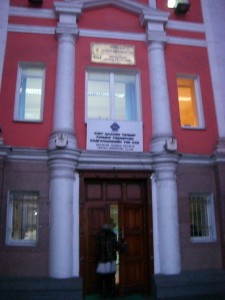
Because of the cold weather, I was a little hungry and ate 2 plates for dinner, Lamb soup noodles and Lamb Goulash. (5400 Tugruk~USD$3.5).
Lamb is a common dish here because Mongolia is a big animal husbandary country. On the train someone told me that half a kilo of lamb here only cost 2 Renminbi.
I heard some horror stories about a few tourists got robbed on the street.
The sign on the hostel doesn’t help.
![P1082242 [640x480]](http://journey26.com/blog/wp-content/uploads/2010/01/P1082242-640x480-300x225.jpg)
Internet cafes here close at 9pm but the post office provides 24 hours internet access. Went there to update my blog and got back home at 2am and had to climb the gate to get back inside.
![CIMG6949 [640x480]](http://journey26.com/blog/wp-content/uploads/2010/01/CIMG6949-640x480-300x225.jpg)
![P1072177 [640x480]](http://journey26.com/blog/wp-content/uploads/2010/01/P1072177-640x480-300x225.jpg)
![CIMG6958 [640x480]](http://journey26.com/blog/wp-content/uploads/2010/01/CIMG6958-640x480-300x225.jpg)
![CIMG6956 [640x480]](http://journey26.com/blog/wp-content/uploads/2010/01/CIMG6956-640x480-300x225.jpg)
![CIMG6969 [640x480]](http://journey26.com/blog/wp-content/uploads/2010/01/CIMG6969-640x480-300x225.jpg)
![CIMG6972 [640x480]](http://journey26.com/blog/wp-content/uploads/2010/01/CIMG6972-640x480-300x225.jpg)
![CIMG6980 [640x480]](http://journey26.com/blog/wp-content/uploads/2010/01/CIMG6980-640x480-300x225.jpg)

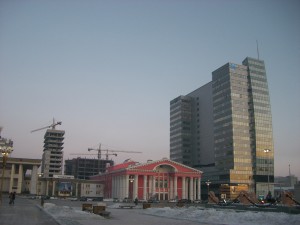
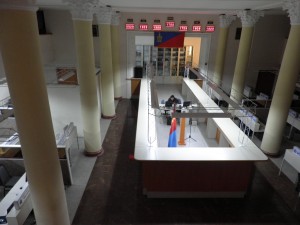
![CIMG6996 [640x480]](http://journey26.com/blog/wp-content/uploads/2010/01/CIMG6996-640x480-300x225.jpg)
![CIMG6932 [640x480]](http://journey26.com/blog/wp-content/uploads/2010/01/CIMG6932-640x480-300x225.jpg)
![CIMG6934 [640x480]](http://journey26.com/blog/wp-content/uploads/2010/01/CIMG6934-640x480-300x225.jpg)
![CIMG6936 [640x480]](http://journey26.com/blog/wp-content/uploads/2010/01/CIMG6936-640x480-300x225.jpg)
![CIMG6939 [640x480]](http://journey26.com/blog/wp-content/uploads/2010/01/CIMG6939-640x480-300x225.jpg)
![CIMG6940 [640x480]](http://journey26.com/blog/wp-content/uploads/2010/01/CIMG6940-640x480-300x225.jpg)
![CIMG6943 [640x480]](http://journey26.com/blog/wp-content/uploads/2010/01/CIMG6943-640x480-300x225.jpg)
![CIMG6904 [640x480]](http://journey26.com/blog/wp-content/uploads/2010/01/CIMG6904-640x480-225x300.jpg)
![CIMG6906 [640x480]](http://journey26.com/blog/wp-content/uploads/2010/01/CIMG6906-640x480-300x225.jpg)
![CIMG6908 [640x480]](http://journey26.com/blog/wp-content/uploads/2010/01/CIMG6908-640x480-300x225.jpg)
![CIMG6910 [640x480]](http://journey26.com/blog/wp-content/uploads/2010/01/CIMG6910-640x480-300x225.jpg)
![CIMG6911 [640x480]](http://journey26.com/blog/wp-content/uploads/2010/01/CIMG6911-640x480-300x225.jpg)
![CIMG6914 [640x480]](http://journey26.com/blog/wp-content/uploads/2010/01/CIMG6914-640x480-300x225.jpg)
![CIMG6915 [640x480]](http://journey26.com/blog/wp-content/uploads/2010/01/CIMG6915-640x480-300x225.jpg)
![CIMG6916 [640x480]](http://journey26.com/blog/wp-content/uploads/2010/01/CIMG6916-640x480-300x225.jpg)
![CIMG6918 [640x480]](http://journey26.com/blog/wp-content/uploads/2010/01/CIMG6918-640x480-225x300.jpg)
![CIMG6917 [640x480]](http://journey26.com/blog/wp-content/uploads/2010/01/CIMG6917-640x480-300x225.jpg)
![CIMG6919 [640x480]](http://journey26.com/blog/wp-content/uploads/2010/01/CIMG6919-640x480-300x225.jpg)
![CIMG6920 [640x480]](http://journey26.com/blog/wp-content/uploads/2010/01/CIMG6920-640x480-300x225.jpg)
![CIMG6922 [640x480]](http://journey26.com/blog/wp-content/uploads/2010/01/CIMG6922-640x480-300x225.jpg)
![CIMG6924 [640x480]](http://journey26.com/blog/wp-content/uploads/2010/01/CIMG6924-640x480-300x225.jpg)
![CIMG6927 [640x480]](http://journey26.com/blog/wp-content/uploads/2010/01/CIMG6927-640x480-300x225.jpg)
![CIMG6928 [640x480]](http://journey26.com/blog/wp-content/uploads/2010/01/CIMG6928-640x480-300x225.jpg)
![CIMG6931 [640x480]](http://journey26.com/blog/wp-content/uploads/2010/01/CIMG6931-640x480-300x225.jpg)
![P1032128 [640x480]](http://journey26.com/blog/wp-content/uploads/2010/01/P1032128-640x480-300x225.jpg)
![P1032132 [640x480]](http://journey26.com/blog/wp-content/uploads/2010/01/P1032132-640x480-300x225.jpg)
![P1032133 [640x480]](http://journey26.com/blog/wp-content/uploads/2010/01/P1032133-640x480-300x225.jpg)
![P1032135 [640x480]](http://journey26.com/blog/wp-content/uploads/2010/01/P1032135-640x480-300x225.jpg)
![P1032136 [640x480]](http://journey26.com/blog/wp-content/uploads/2010/01/P1032136-640x480-300x225.jpg)
![P1032137 [640x480]](http://journey26.com/blog/wp-content/uploads/2010/01/P1032137-640x480-300x225.jpg)
![P1032140 [640x480]](http://journey26.com/blog/wp-content/uploads/2010/01/P1032140-640x480-300x225.jpg)
![P1032141 [640x480]](http://journey26.com/blog/wp-content/uploads/2010/01/P1032141-640x480-300x225.jpg)
![P1032144 [640x480]](http://journey26.com/blog/wp-content/uploads/2010/01/P1032144-640x480-300x225.jpg)
![P1032142 [640x480]](http://journey26.com/blog/wp-content/uploads/2010/01/P1032142-640x480-300x225.jpg)
![P1032147 [640x480]](http://journey26.com/blog/wp-content/uploads/2010/01/P1032147-640x480-300x225.jpg)
![P1032148 [640x480]](http://journey26.com/blog/wp-content/uploads/2010/01/P1032148-640x480-300x225.jpg)
![P1032151 [640x480]](http://journey26.com/blog/wp-content/uploads/2010/01/P1032151-640x480-300x225.jpg)
![P1032152 [640x480]](http://journey26.com/blog/wp-content/uploads/2010/01/P1032152-640x480-300x225.jpg)
![P1032155 [640x480]](http://journey26.com/blog/wp-content/uploads/2010/01/P1032155-640x480-300x225.jpg)
![P1032157 [640x480]](http://journey26.com/blog/wp-content/uploads/2010/01/P1032157-640x480-300x225.jpg)



![CIMG6872 [640x480]](http://journey26.com/blog/wp-content/uploads/2010/01/CIMG6872-640x480-300x225.jpg)
![CIMG6880 [640x480]](http://journey26.com/blog/wp-content/uploads/2010/01/CIMG6880-640x480-300x225.jpg)
![CIMG6882 [640x480]](http://journey26.com/blog/wp-content/uploads/2010/01/CIMG6882-640x480-225x300.jpg)
![CIMG6887 [640x480]](http://journey26.com/blog/wp-content/uploads/2010/01/CIMG6887-640x480-300x225.jpg)
![CIMG6886 [640x480]](http://journey26.com/blog/wp-content/uploads/2010/01/CIMG6886-640x480-300x225.jpg)
![CIMG6892 [640x480]](http://journey26.com/blog/wp-content/uploads/2010/01/CIMG6892-640x480-300x225.jpg)
![CIMG6896 [640x480]](http://journey26.com/blog/wp-content/uploads/2010/01/CIMG6896-640x480-300x225.jpg)
![CIMG6897 [640x480]](http://journey26.com/blog/wp-content/uploads/2010/01/CIMG6897-640x480-225x300.jpg)
![CIMG6868 [640x480]](http://journey26.com/blog/wp-content/uploads/2010/01/CIMG6868-640x480-300x225.jpg)
![P1022078 [640x480]](http://journey26.com/blog/wp-content/uploads/2010/01/P1022078-640x480-300x225.jpg)
![P1022079 [640x480]](http://journey26.com/blog/wp-content/uploads/2010/01/P1022079-640x480-300x225.jpg)
![P1022081 [640x480]](http://journey26.com/blog/wp-content/uploads/2010/01/P1022081-640x480-300x225.jpg)
![P1022082 [640x480]](http://journey26.com/blog/wp-content/uploads/2010/01/P1022082-640x480-300x225.jpg)
![P1022084 [640x480]](http://journey26.com/blog/wp-content/uploads/2010/01/P1022084-640x480-300x225.jpg)
![P1022085 [640x480]](http://journey26.com/blog/wp-content/uploads/2010/01/P1022085-640x480-300x225.jpg)
![P1022086 [640x480]](http://journey26.com/blog/wp-content/uploads/2010/01/P1022086-640x480-300x225.jpg)
![P1022090 [640x480]](http://journey26.com/blog/wp-content/uploads/2010/01/P1022090-640x480-300x225.jpg)
![P1022098 [640x480]](http://journey26.com/blog/wp-content/uploads/2010/01/P1022098-640x480-300x225.jpg)
![P1022095 [640x480]](http://journey26.com/blog/wp-content/uploads/2010/01/P1022095-640x480-300x225.jpg)
![P1022102 [640x480]](http://journey26.com/blog/wp-content/uploads/2010/01/P1022102-640x480-300x225.jpg)
![P1022105 [640x480]](http://journey26.com/blog/wp-content/uploads/2010/01/P1022105-640x480-300x225.jpg)
![P1022106 [640x480]](http://journey26.com/blog/wp-content/uploads/2010/01/P1022106-640x480-300x225.jpg)
![P1022107 [640x480]](http://journey26.com/blog/wp-content/uploads/2010/01/P1022107-640x480-300x225.jpg)
![P1022113 [640x480]](http://journey26.com/blog/wp-content/uploads/2010/01/P1022113-640x480-300x225.jpg)
![P1022114 [640x480]](http://journey26.com/blog/wp-content/uploads/2010/01/P1022114-640x480-300x225.jpg)
![P1022116 [640x480]](http://journey26.com/blog/wp-content/uploads/2010/01/P1022116-640x480-300x225.jpg)
![P1022122 [640x480]](http://journey26.com/blog/wp-content/uploads/2010/01/P1022122-640x480-300x225.jpg)
![P1022126 [640x480]](http://journey26.com/blog/wp-content/uploads/2010/01/P1022126-640x480-300x225.jpg)
![P1012026 [640x480]](http://journey26.com/blog/wp-content/uploads/2010/01/P1012026-640x480-300x225.jpg)
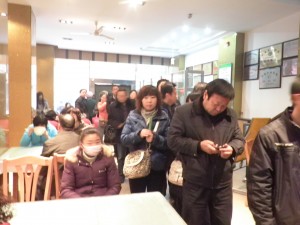
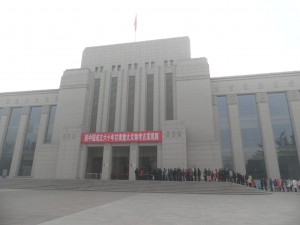

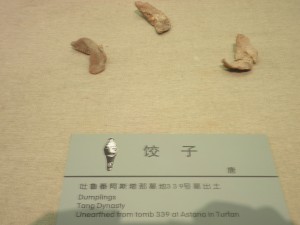

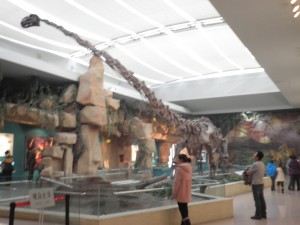

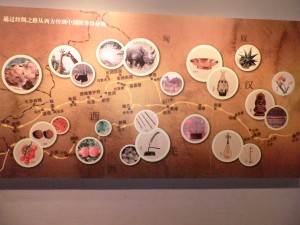
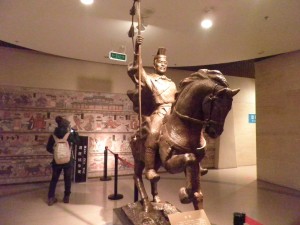
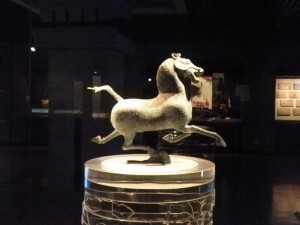
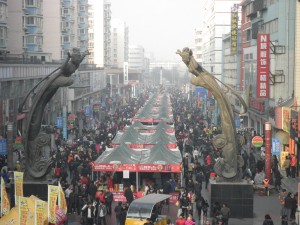
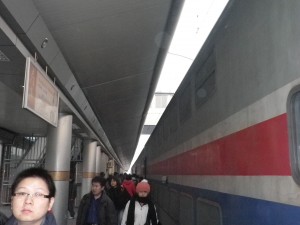

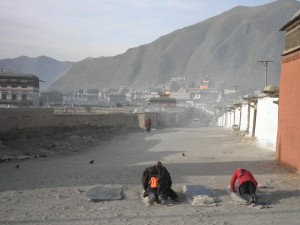
![PC311980 [640x480]](http://journey26.com/blog/wp-content/uploads/2010/12/PC311980-640x480-300x225.jpg)
![PC311981 [640x480]](http://journey26.com/blog/wp-content/uploads/2010/12/PC311981-640x480-300x225.jpg)
![PC311982 [640x480]](http://journey26.com/blog/wp-content/uploads/2010/12/PC311982-640x480-300x225.jpg)
![PC311984 [640x480]](http://journey26.com/blog/wp-content/uploads/2010/12/PC311984-640x480-300x225.jpg)
![PC311991 [640x480]](http://journey26.com/blog/wp-content/uploads/2010/12/PC311991-640x480-300x225.jpg)
![PC311992 [640x480]](http://journey26.com/blog/wp-content/uploads/2010/12/PC311992-640x480-300x225.jpg)
![PC311995 [640x480]](http://journey26.com/blog/wp-content/uploads/2010/12/PC311995-640x480-300x225.jpg)
![PC312000 [640x480]](http://journey26.com/blog/wp-content/uploads/2010/12/PC312000-640x480-225x300.jpg)
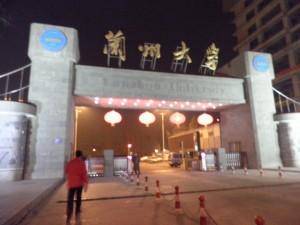

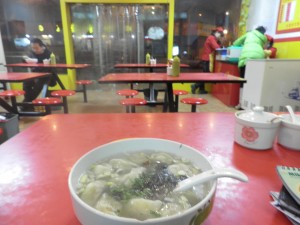
![PC301906 [640x480]](http://journey26.com/blog/wp-content/uploads/2010/12/PC301906-640x480-300x225.jpg)


![PC301931 [640x480]](http://journey26.com/blog/wp-content/uploads/2010/12/PC301931-640x480-300x225.jpg)
![PC301929 [640x480]](http://journey26.com/blog/wp-content/uploads/2010/12/PC301929-640x480-300x225.jpg)
![PC301916 [640x480]](http://journey26.com/blog/wp-content/uploads/2010/12/PC301916-640x480-300x225.jpg)
![PC301920 [640x480]](http://journey26.com/blog/wp-content/uploads/2010/12/PC301920-640x480-300x225.jpg)
![PC301923 [640x480]](http://journey26.com/blog/wp-content/uploads/2010/12/PC301923-640x480-300x225.jpg)
![PC301932 [640x480]](http://journey26.com/blog/wp-content/uploads/2010/12/PC301932-640x480-300x225.jpg)
![PC301934 [640x480]](http://journey26.com/blog/wp-content/uploads/2010/12/PC301934-640x480-300x225.jpg)
![PC301946 [640x480]](http://journey26.com/blog/wp-content/uploads/2010/12/PC301946-640x480-300x225.jpg)
![PC301960 [640x480]](http://journey26.com/blog/wp-content/uploads/2010/12/PC301960-640x480-300x225.jpg)
![PC301974 [640x480]](http://journey26.com/blog/wp-content/uploads/2010/12/PC301974-640x480-300x225.jpg)
![PC291896 [640x480]](http://journey26.com/blog/wp-content/uploads/2010/01/PC291896-640x480-300x225.jpg)
![PC291897 [640x480]](http://journey26.com/blog/wp-content/uploads/2010/01/PC291897-640x480-300x225.jpg)
![PC291898 [640x480]](http://journey26.com/blog/wp-content/uploads/2010/01/PC291898-640x480-300x225.jpg)
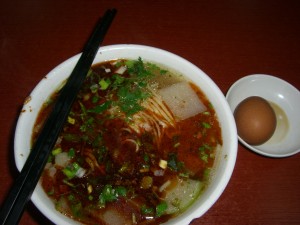
![CIMG6823 [640x480]](http://journey26.com/blog/wp-content/uploads/2010/12/CIMG6823-640x480-225x300.jpg)
![CIMG6827 [640x480]](http://journey26.com/blog/wp-content/uploads/2010/12/CIMG6827-640x480-225x300.jpg)
![CIMG6831 [640x480]](http://journey26.com/blog/wp-content/uploads/2010/12/CIMG6831-640x480-300x225.jpg)
![CIMG6835 [640x480]](http://journey26.com/blog/wp-content/uploads/2010/12/CIMG6835-640x4801-300x225.jpg)
![CIMG6837 [640x480]](http://journey26.com/blog/wp-content/uploads/2010/12/CIMG6837-640x4801-300x225.jpg)
![CIMG6839 [640x480]](http://journey26.com/blog/wp-content/uploads/2010/12/CIMG6839-640x480-300x225.jpg)

![CIMG6843 [640x480]](http://journey26.com/blog/wp-content/uploads/2010/12/CIMG6843-640x4801-300x225.jpg)
![CIMG6848 [640x480]](http://journey26.com/blog/wp-content/uploads/2010/12/CIMG6848-640x480-300x225.jpg)
![PC281873 [640x480]](http://journey26.com/blog/wp-content/uploads/2010/12/PC281873-640x480-300x225.jpg)
![PC281875 [640x480]](http://journey26.com/blog/wp-content/uploads/2010/12/PC281875-640x480-300x225.jpg)
![PC281877 [640x480]](http://journey26.com/blog/wp-content/uploads/2010/12/PC281877-640x480-300x225.jpg)
![PC281881 [640x480]](http://journey26.com/blog/wp-content/uploads/2010/12/PC281881-640x480-300x225.jpg)
![PC281882 [640x480]](http://journey26.com/blog/wp-content/uploads/2010/12/PC281882-640x480-300x225.jpg)
![PC281888 [640x480]](http://journey26.com/blog/wp-content/uploads/2010/12/PC281888-640x480-300x225.jpg)
![PC281884 [640x480]](http://journey26.com/blog/wp-content/uploads/2010/12/PC281884-640x480-300x225.jpg)
![PC281886 [640x480]](http://journey26.com/blog/wp-content/uploads/2010/12/PC281886-640x4801-300x225.jpg)
![PC281889 [640x480]](http://journey26.com/blog/wp-content/uploads/2010/12/PC281889-640x480-300x225.jpg)